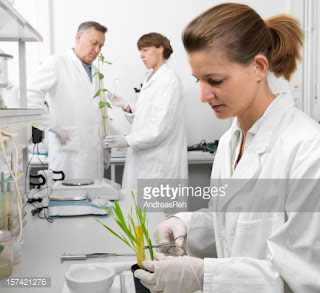Sample Research Paper on Sulfur Deficiency in Brassica Rapa Plant
Introduction
In plants, essential nutrients play significant
roles to ensure the healthy functioning of the plants. The nutrients in plants
are protein, vitamins, minerals, nucleic acids and carbohydrates. The essential
nutrients are divided into macro-nutrients and micro-nutrients which have
distinctive roles in plants. The macro-nutrients are calcium, sulfur, nitrogen,
phosphorus, potassium and magnesium. On the other hand, micro-nutrients
encompass; chlorine, manganese, iron, zinc, nickel, copper and barium (Imsande
140). When the plants are in deficient of any of the essential nutrients, their
functions are affected. Some of the causes of the unavailability of the
essential nutrients to the plants include; change in weather conditions,
acid-like conditions and drought. The depletion of macro-nutrients in plants
results in wilting decreased budding and loss of chlorophyll. When the plant is in deficient of sulfur,
growth of the plant is retarded (González-Ballester et al. 2080). Sulfur plays a vital role in the
various synthesis of amino acids and in making necessary protein and hormones
in plants(Rending and Oputa 433). The structure of plant cell wall is composed
of several amino acids and protein, and hormones regulate plant cell wall
function. Therefore, the decreased level
of sulfur in plants affects the structure of plant cell wall (Lewandowska
and Sirko 465, Soetan, Olaiya and Oyewole 222). In this research, macronutrient sulfur was selected
for the study since its effects and deficient in Brassica plants are easily
observed and determined (Aghajanzadeh et al.
n.p). For the aim of the
experiment, the heights of separate plant groups were measured. The plant
groups were arranged into three groups; one with 100% sulfur, 50% depleted of
sulfur and the other 100% depleted of sulfur.
The degree of chlorosis in plants was determined using the
spectrophotometer. The number of leaves was physically counted, and the root
length was measured using a ruler.
Lastly, the density of the stomata was observed using a microscope. Based on this experiment, it was hypothesized
that sulfur deficiency contributed to shorter plants with fewer leaves, shorter
roots, few chlorophyll pigments, and with low-density stomata.
Methods
The nutrient solution was
absorbed by fitting sixteen plant spaces from each six planting quads with a
wick. Every quad was filled with soil, patted down, and refilled until each had
desired quantity of the soil. In each cell, just below the surface, one seed
was planted. 50 mL of the selected solution was poured per cell, and then 50
more mL of chosen solution was emptied nearby the base of the whole plant quad.
Plant solutions were made distinctively for each two plant quads. In quads 1
and 2 with 32 plants in total, the prepared solution was lacking 100% sulfur.
For quads 3 and 4, the solution was made to have 50% deficient in sulfur.
Finally, Quads 5 and 6 were made with Hogland’s Complete Solution, which
contains all the essential nutrients.
The height and root length of the
plant were measured using a ruler at the end of three weeks of growing
duration. The quantitative examination of chlorosis was performed using a
spectrophotometer to obtain the concentration of chlorophyll in a particular leaf
per plant quad. Chlorophyll in the leaf was dissolved by taking two punches of
the leaf and dissolving it in 80% acetone. The obtained solution from the
dissolution was grounded in the mortar using a pestle to break all the tissues
into smallest particles. Due to evaporative nature of acetone, the lost amount
of acetone was determined and the lost amount added to the original solution.
The solution was then centrifuged at 300rpm for five minutes at 22 degree Celsius. 2ml of the
resultant supernatant liquid was analyzed via spectrophotometer at four
different wavelengths (470, 645, 663, 720 nm) to determine the quantities of
the chlorophyll a, b and carotenoids in the designated leaf.
The density of the stomata was obtained within areas of 1mm^2. For
every treated group had one leaf to be measured. Two holes were made into the
leaf, and the back of the leaf was sheltered in a thin sheet of clear nail
polish. The polish dried up for 10 minutes, and the tape was put on topmost of
the two holes. The leaf impression was
imprinted on the tape through clear nail polish by carefully removing the tape.
The tape was then placed on a slide and observed under a microscope. Some
stomata in 1x 1mm area of the leaf were counted.
Results
Photosynthetic pigments
The average concentration of chlorophyll a in 100% sulfur, 50%
sulfur treated leaf and sulfur deficient leaf were 19.936748ug/cm2,
18.356776ug/cm2, and 12.53167ug/cm2 respectively. While
the chlorophyll b and carotenoid the average concentrations for the same leaves
were 7.15195ug/cm2, 5.3005ug/cm2,5.2656ug/cm2
and 5.10037ug/cm2, 4.4636442ug/cm2, 3.38786812ug/cm2
(Table 1). The overall average of chlorophyll levels in three plant treatment
was as shown in Fig1.
Discussion
According to the results, only one part of the hypothesis of the
study was justified. For instance, sulfur deficient in Brassica Rapa leads to
plants with little chlorophyll. It was observed that the complete plant had
more chlorophyll pigmentation than 50% sulfur treated plants (half) and
deficient sulfur plants (Table 1, 2, 3 and 4). The concentration of chlorophyll
a was high in all the Brassica Rapa plant tested, followed by chlorophyll b and
then carotenoids as seen in Fig 1. The number of the leaves was more pronounced
in Brassica plant in sulfur deficient, recording average mean of 6.78125(Table
6). The stomata density was high in deficient sulfur Brassica with the average
mean of 65.5(Table 5). The Brassica plant which had a high concentration of
sulfur was taller than its counterpart with the average mean of 22.13125. On
the contrary to the hypothesis that states, “Deficient Sulfur in plants result
in shorter plants," Brassica plant which was deficient in sulfur, was
taller than Brassica Rapa treated with 50% sulfur solution.
In this experiment, there were negligible errors associated with
the results, as can be seen in Table 3. Thus, the errors did not have a
significant effect on the results.
It was identified in this study that the number of stomata density
and leaves were more pronounced in sulfur deficient Brassica Rapa plant. Hence,
for further study, scholars should consider carrying out research on the
relationship between the number of leaves, stomata density and sulfur deficient
in plants.
Works
cited
Aghajanzadeh,
Tahereh et al. "Atmospheric H2S And SO2 As Sulfur
Source For Brassica Juncea And Brassica Rapa: Impact On The Glucosinolate
Composition". Frontiers in Plant Science 6 (2015): n. pag. Web.
González-Ballester,
D., Casero, D., Cokus, S., Pellegrini, M., Merchant, S. S., Grossman, A. R.
2010. RNA-Seq analysis of sulfur-deprived Chlamydomonas
cells reveals aspects of acclimation critical for cell survival. American Society of Plant Biologists. 22:
2058-2084.web.
Imsande,
J. 1998. Iron, sulfur, and chlorophyll deficiencies: a need for an integrative
approach to plant physiology. Physiologia Plantarium. 139-144.web.
Lewandowska, Małgorzata, and
Agnieszka Sirko. "Recent advances in understanding plant response to
sulfur-deficiency stress." Acta Biochim Pol 55.3 (2008): 457-71.web
Rendig,
V. V., Oputa, C., McComb, E. A. 1976. Effects of sulfur deficiency on
non-protein nitrogen, soluble sugars, and N/S ratios in young corn plants. Department of Soils and Plant Nutrition.
423-437.web.
Soetan, K. O., C. O. Olaiya, and O.
E. Oyewole. "The importance of mineral elements for humans, domestic
animals and plants: A review." African Journal of Food Science 4.5
(2010): 200-222.web.









Comments
Post a Comment